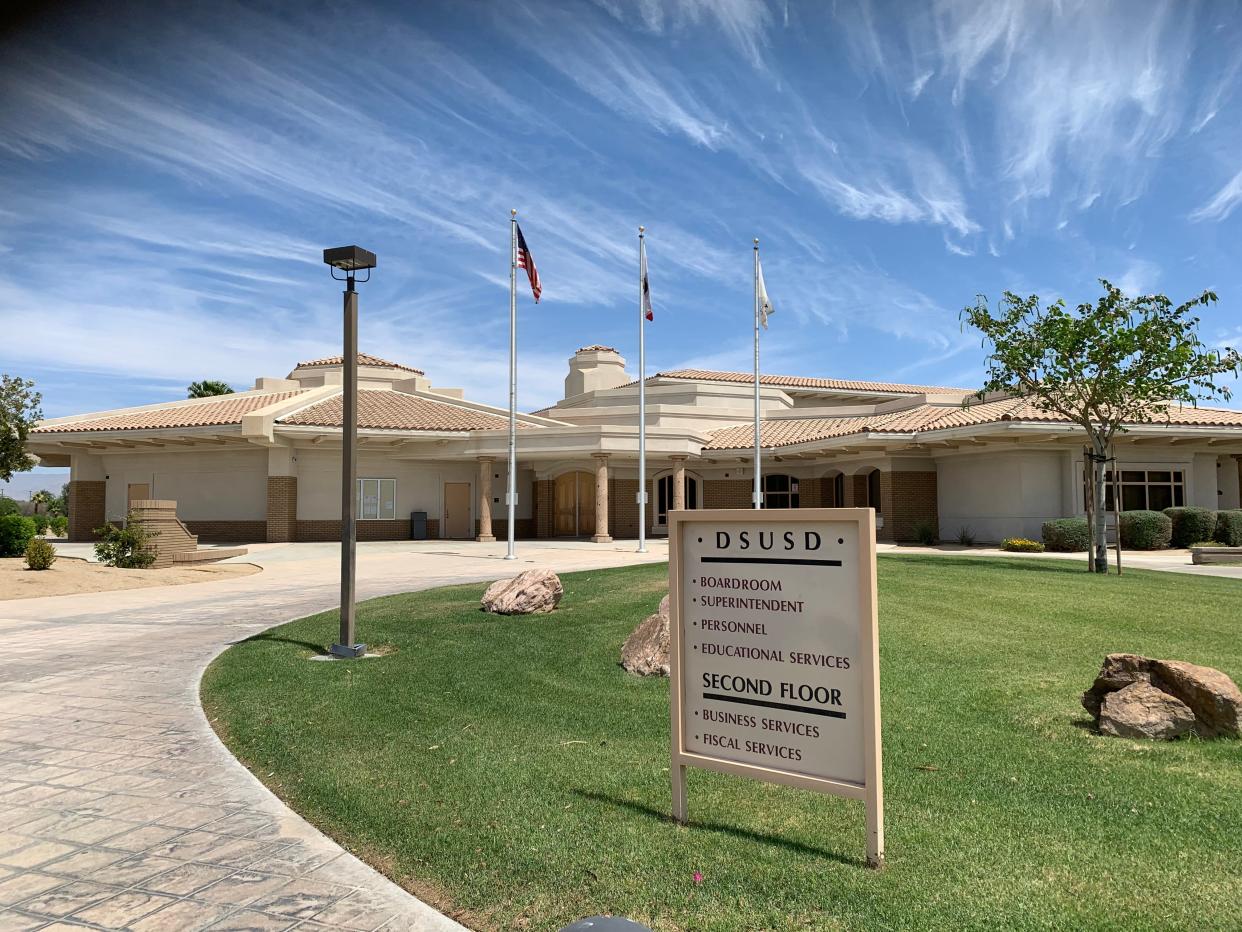Measure A: Desert Sands Unified to ask voters to pass $675 million bond measure in March

Voters will decide in March whether Desert Sands Unified School District should borrow $675 million to repair and maintain aging classrooms and school facilities.
Voters within DSUSD's boundaries will vote during the presidential primary on whether to approve a "general obligation" bond, a type of bond issued by school districts to finance construction costs on modernization projects, typically through an increase on local property taxes.
In this case, though, taxes wouldn't go up. The school district is asking voters to consider extending the duration of the current tax rate — previously approved at $75 per $100,000 of assessed property valuations — a combination of two previous authorizations from Measure K and Measure KK.
The renovation of Indio High School was the last project funded with the Measure K funds. Currently, James Earl Carter Elementary and Harry S. Truman Elementary schools are benefiting from the Measure KK funds.
After the earlier two bonds are paid off in 2044 and if the new bond is approved by voters, the tax rate would lessen to $60 per $100,000 of assessed property (not market rate) valuations through 2054.
Through its facility master plan, DSUSD has assessed its needs for the next five to 10 years. The long-range plan recognized the oldest schools and even some schools that have been modernized, including high-priority sites like Martin Van Buren Elementary, Abraham Lincoln Elementary, John F. Kennedy Elementary, Andrew Jackson Elementary and Thomas Jefferson Middle, as well as other needs.
Related: Frustrated by school traffic? Indian Wells has plans to improve flow by Ford Elementary
In mailers that local voters received, the district noted that it wants to maximize state funding through the proposed bond by qualifying its schools for future state matching funds to assist in the modernization of school facilities.
To meet eligibility for a state-funded modernization project, school sites must be identified with significant needs and must reach the 25-year mark. If all criteria is met, school districts can receive financial support from the state through a 60/40 matching program.
Here's a hypothetical example: if a school site were to cost taxpayers $100 million to modernize its facilities, the district's strategy is to ask taxpayers for $60 million while expecting the state to cover the remaining $40 million, rather than asking taxpayers to foot the entire $100 million bill.
However, in this scenario, Jordan Aquino, the assistant superintendent of business services, makes it clear that the district would, "as a fiscal steward being careful with how we're allocating dollars," use $100 million from the bond to fund and complete the modernization project and wait for the state to reimburse the matching funds.
There's other factors the district takes into account, such as the perspective of voters who may not see a direct advantage from an updated school site or who don't have children enrolled in the local schools.
"You want the community to feel a level of confidence in the reason why taxpayers should trust (the district's ability) with their money," Aquino said.
At the most recent school board meeting on Nov. 14, during a discussion of the approved calendar for next school year, the board of education addressed concerns that the start time in late August might be too hot for students.
Aquino highlighted efforts recently approved by the board to mitigate the heat during recess and student dismissal, including a $20 million initiative to add shade structures to some campuses. In tackling this project, the district would exhaust other capital project funds it has reserved. So the proposed bond measure would help the district be able to provide shade structures to the remaining school sites.
"It's something that the community is interested in for us to address," he said. "We're balancing what the needs are of the community and, at the same time, balancing the sites that we want to modernize in order to achieve some of those state matching funds that we could be eligible for."
Measure A on the March 5 primary ballot will require approval of at least 55% of local voters who cast a ballot.
Jennifer Cortez covers education in the Coachella Valley. Reach her at jennifer.cortez@desertsun.com.
This article originally appeared on Palm Springs Desert Sun: Desert Sands Unified wants to borrow $675M for school repairs

